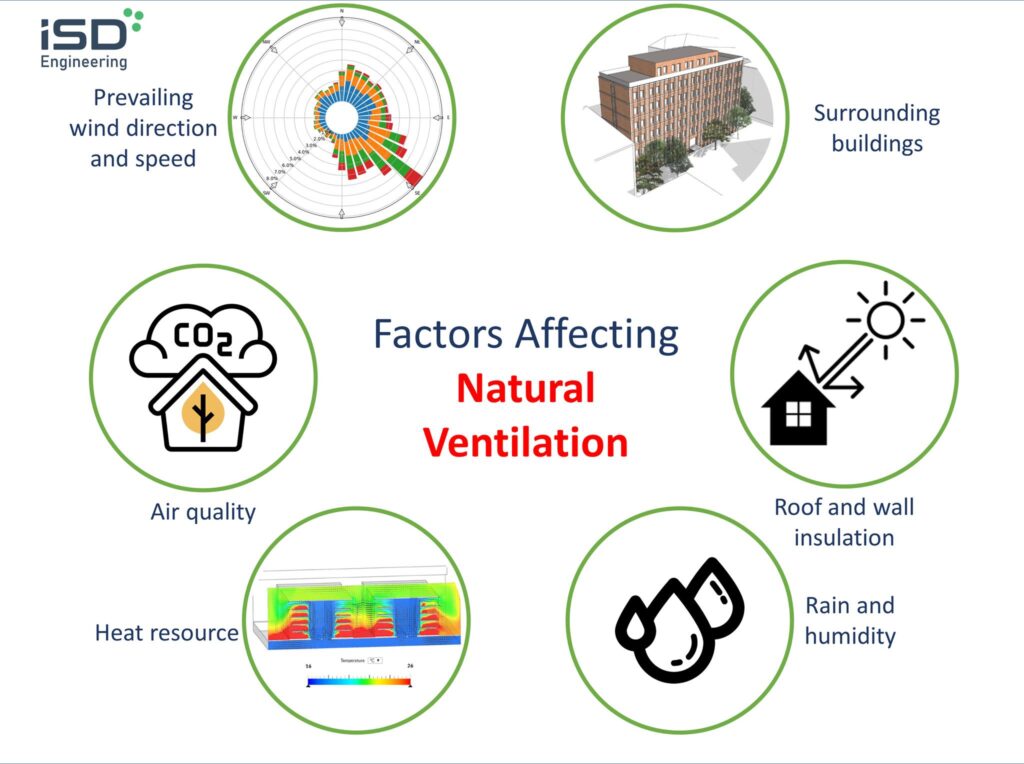
Factors that need be considered when conducting natural ventilation design
News
Before designing a natural ventilation system for a building, there are some factors that we should take into account to have an effective natural ventilation system:
- Air Quality: Before starting the project, we need to do research on environmental impact assessment, measure and check ambient air quality. For areas having low air quality ambient air, natural ventilation should not be used because it will affect the health of people inside the building
- Main wind direction and average wind speed: To determine the wind direction and the wind speed to arrange openings having appropriate size while still meeting the need for ventilation. In the Southern Vietnam, the main wind directions in summer are south and southeast. For areas with high wind speeds, we should not arrange too large openings
- Obstruction by surrounding buildings: if buildings locate far from surrounding ones, they are not affected noticeably, the main wind direction affecting the building is still south and southeast. If buildings locate in areas having high building density, a change in wind direction should be considered. CFD simulations can be used in that area to determine the direction of the wind impacting the buildings
- Heat generated inside the building (30-40 W/m2): it is industrial buildings not civil and residential buildings which generate much heat, and heat must be taken into consideration to reduce cooling costs for the building
- Rain and humidity: the bigger the opening is, the more outside moisture comes, especially in the “Nom” (humid weather) in the Northern Vietnam. The devices that can automatically open or close should be used to avoid moist air entering the building. In February to April, the air is cool but brings a lot of moisture, the openings should be closed to avoid bringing too much moisture into the building. In July to September having slightly humid, the openings can be opened for natural ventilation
- Roof and wall insulation: good insulation is an effective way to keep the indoor air cool. With a good insulation, the air in bottom layer is heated less and it is better for air convection. Conversely, if the insulation is not good, all the indoor air is hot, the convection efficiency will be less and it causes more heat inside the building

- Posted on
- November 1, 2020

